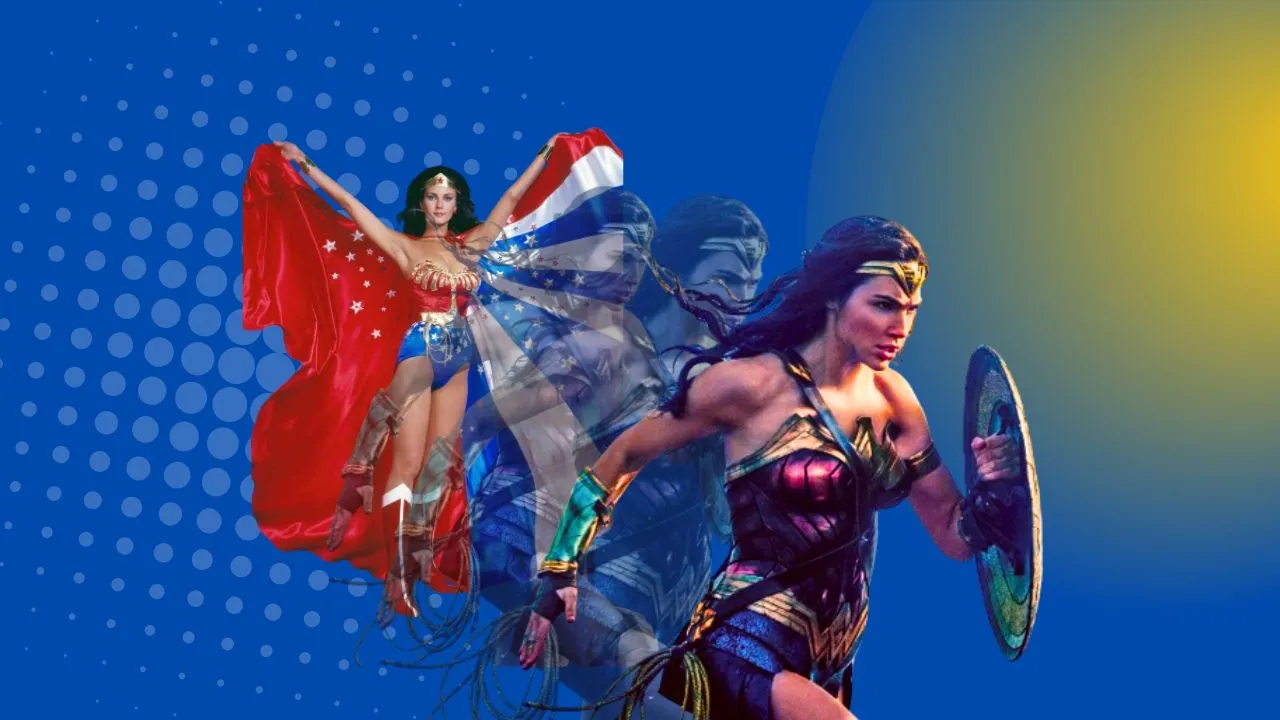In the annals of superhero history, few characters have experienced a transformation as remarkable as Wonder Woman. From her whimsical television origins in the ’70s to her triumphant return in the cinematic blockbuster, Wonder Woman’s journey has been nothing short of extraordinary. The iconic superhero, often associated with Lynda Carter’s portrayal in the beloved TV show, found a new life and a fresh narrative in the 21st century with Patty Jenkins’ directorial magic.
As we delve into the evolution of Wonder Woman, it’s a journey filled with twists, turns, and the persistence of a character who has not only captured the hearts of fans but has also become a symbol of empowerment for a new generation. From the early attempts to bring her to the big screen in the ’90s to the casting challenges and controversies that marked her rise, Wonder Woman’s story is a testament to the enduring appeal of a superhero who stands for justice, strength, and equality.
Table of Contents
The Journey to Wonder Woman’s Blockbuster Film
In the 1970s, Wonder Woman graced the small screen in a popular yet somewhat silly TV show. However, the iconic character disappeared from the limelight until DC’s blockbuster hit, Wonder Woman, brought her back to the forefront. Here are 20 intriguing facts about the movie and its journey to the silver screen.
The Long Road to Production
The idea of a Wonder Woman movie originated in 1996, with various directors, including Ivan Reitman and Joss Whedon, attempting to bring the superhero to life. Michelle MacLaren was initially set to direct, but creative differences led to Patty Jenkins ultimately helming the project.
Casting Challenges and Choices
Numerous actresses were considered for the role of Wonder Woman over the years, from Sandra Bullock to Angelina Jolie. Gal Gadot secured the part, making her debut in Zack Snyder’s Batman v. Superman: Dawn of Justice. The film’s casting also saw changes for the character of Hippolyta, played by Connie Nielsen.
Unique Marketing Strategies
Wonder Woman’s impact extended beyond traditional promotion, with a NASCAR car featuring a Wonder Woman paint scheme in 2017. This unconventional marketing move garnered attention as the renowned racer Danica Patrick took the wheel.
Global Reception and Controversies
Several Arabic countries faced controversies surrounding Wonder Woman due to Gal Gadot’s military service, leading to bans and considerations of banning the film. Despite this, the movie triumphed globally, becoming a significant cultural phenomenon.

Cinematic Marvels: Themyscira and Filming Locations
The idyllic Amazonian home, Themyscira, was brought to life on the Amalfi Coast of Italy. Director Patty Jenkins, drawing inspiration from Richard Donner’s Superman, navigated a new cinematic territory, departing from her previous work on Monster.
Nostalgia and Cameos
Lynda Carter and Lyle Waggoner, stars of the ’70s Wonder Woman TV show, were sought for cameos, but their busy schedules prevented their participation. Instead, Zack Snyder made a surprise appearance in the film.
Naming Themyscira
Originally known as “Paradise Island,” Themyscira was introduced in the ’80s comics. In the film, Steve Trevor humorously refers to it as “Paradise Island,” paying homage to the character’s comic book origins.
Realism in Superhero Naming
In a departure from the comic book tradition, the film avoids directly calling Diana “Wonder Woman.” This decision aligns with a more realistic approach to naming a superhero in the movie’s narrative.
Behind-the-Scenes Choices
Chris Pine’s role as Steve Trevor almost went to Liam Hemsworth or Alexander Skarsgard. Had they been cast, it could have added an intriguing layer of family rivalry, considering Hemsworth’s brother’s role as Thor in the MCU.
Blending Mythology and Reality
While Wonder Woman explores a world of gods and mythology, it also introduces a real historical figure. Danny Huston’s character, Erich Ludendorff, was a genuine German general during World War I.
Symbolic Memorials and Historical References
The film’s memorial for Steve Trevor draws inspiration from a photo of Eddie Rickenbacker, a famous World War I flying ace. The attention to detail extends to the squadron logo and plane number.
Casting Authenticity
To portray the Amazonian Artemis, director Patty Jenkins chose non-actor Ann Wolfe, a retired female boxing champion renowned for her toughness and fighting skills.
Breaking Records and Empowering Women
Upon its release in 2017, Wonder Woman earned $822.3 million globally, marking the highest-grossing film directed by a solo female director at the time. It made history and fueled the growing demand for female-led superhero films.
Sequels and Immortality
The success of Wonder Woman led to a sequel, Wonder Woman 1984, exploring different time periods. The immortal nature of Diana, hinted at in Batman v. Superman, paved the way for an unexpected return of Chris Pine’s character, Steve Trevor.
In conclusion, Wonder Woman’s evolution from the ’70s TV screens to the dazzling heights of the cinematic blockbuster landscape is a testament to resilience and the timeless appeal of a superhero who embodies strength and compassion. As we celebrate the success, controversies, and cultural impact, it’s clear that Wonder Woman’s legacy extends beyond the confines of a movie screen.
Through Patty Jenkins’ vision and Gal Gadot’s embodiment, Wonder Woman has become a symbol of empowerment, breaking records, and inspiring generations. The journey isn’t just a cinematic one; it’s a symbol of progress, reminding us that sometimes, heroes don’t just exist in fiction; they shape the world around us.
More from Wisdom Imbibe:

